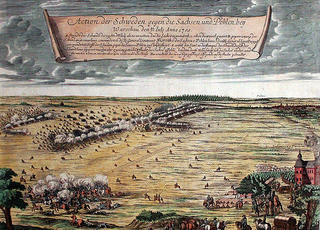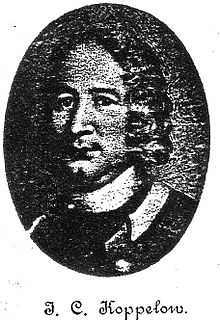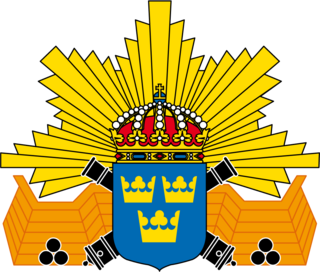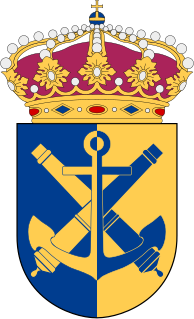
The Great Northern War (1700–1721) was a conflict in which a coalition led by the Tsardom of Russia successfully contested the supremacy of the Swedish Empire in Northern, Central and Eastern Europe. The initial leaders of the anti-Swedish alliance were Peter I of Russia, Frederick IV of Denmark–Norway and Augustus II the Strong of Saxony–Poland–Lithuania. Frederick IV and Augustus II were defeated by Sweden, under Charles XII, and forced out of the alliance in 1700 and 1706 respectively, but rejoined it in 1709 after the defeat of Charles XII at the Battle of Poltava. George I of Great Britain and the Electorate of Hanover joined the coalition in 1714 for Hanover and in 1717 for Britain, and Frederick William I of Brandenburg-Prussia joined it in 1715.

The Battle of Narva on 30 November [O.S. 19 November] 1700 was an early battle in the Great Northern War. A Swedish relief army under Charles XII of Sweden defeated a Russian siege force three to four times its size. Previously, Charles XII had forced Denmark–Norway to sign the Treaty of Travendal. Narva was not followed by further advances of the Swedish army into Russia; instead, Charles XII turned southward to expel August the Strong from Livonia and Poland-Lithuania. Tsar Peter the Great of Russia took Narva in a second battle in 1704.

Count Magnus Stenbock was a Swedish field marshal (Fältmarskalk) and Royal Councillor. A renowned commander of the Carolean Army during the Great Northern War, he was a prominent member of the Stenbock family. He studied at Uppsala University and joined the Swedish Army during the Nine Years' War, where he participated in the Battle of Fleurus in 1690. After the battle, he was appointed lieutenant colonel, entered Holy Roman service as Adjutant General, and married Eva Magdalena Oxenstierna, daughter of statesman Bengt Gabrielsson Oxenstierna. Returning to Swedish service he received colonelcy of a regiment in Wismar, and later became colonel of the Kalmar and then Dalarna regiments.

Count Carl Gustav Rehnskiöld was a Swedish Field Marshal (Fältmarskalk) and Royal Councillor. He was mentor and chief military advisor to King Charles XII of Sweden, and served as deputy commander-in-chief of the Carolean Army, an army he assisted both in its education and development.

The Swedish Coastal Artillery has its origin in the Archipelago Artillery that was raised in 1866. The Coastal Artillery was formed from the Archipelago Artillery, the Marine Regiment and parts of the Artillery in 1902. Kustartilleriet, abbreviated KA, was an independent branch within the Swedish Navy until July 1, 2000, when the Swedish Coastal Artillery was disbanded and reorganised as the Swedish Amphibious Corps. The changed name and new structure were to reflect the new tasks that the old Coastal Artillery had moved to after the end of the Cold War and the demise of the Warsaw Pact.
Western Military District, originally III Military District was a Swedish military district, a command of the Swedish Armed Forces that had operational control over Western Sweden, for most time of its existence corresponding to the area covered by the counties of Gothenburg and Bohus, Älvsborg, Skaraborg and Halland. The headquarters of Milo V were located in Skövde.

The Battle of Warsaw was fought on 31 July 1705 near Warsaw, Poland, during the Great Northern War. The battle was part of a power struggle for the Polish–Lithuanian throne. It was fought between Augustus II the Strong and Stanisław Leszczyński and their allies. Augustus II entered the Northern war as elector of Saxony and king of the Polish–Lithuanian Commonwealth, and had formed an alliance with Denmark–Norway and Russia. Stanisław Leszczyński had seized the Polish throne in 1704, with the support of the Swedish army of Charles XII of Sweden. The struggle for the throne forced the Polish nobility to pick sides; the Warsaw Confederation supported Leszczyński and Sweden, and the Sandomierz Confederation supported Augustus II and his allies. The conflict resulted in the Polish civil war of 1704–1706.

The Air Defence Regiment, is the only anti-aircraft regiment in the Swedish Armed Forces. Its new organisation was introduced in 2000, when all other anti-aircraft units in Sweden were disbanded. The regiment is located in Halmstad and has the responsibility for training two air defence battalions and one home guard battalion.

The Attack on Marstrand was a successful Dano-Norwegian siege of the Swedish town of Marstrand and Carlsten fortress which took place between July 10 and July 16, 1719 during the end of the Great Northern War.

Jürgen Christoph von Koppelow or Jørgen Christopher von Koppelau (1684–1770) was a Norwegian nobleman and officer that fought in the Great Northern War on behalf of Denmark–Norway. Von Koppelow was the son of Curt Christoph von Koppelow, a German-Norwegian nobleman from the House of Koppelow in Mecklenburg-Schwerin. Von Koppelow led the Norwegian Army's 3rd Søndenfjeldske Dragoon Regiment upon its establishment in 1750.

The battles at Göta älv were a series of battles and sieges which took place in and around the Gothenburg area between 1717 and 1719, between the Swedish Empire and Denmark-Norway, during the Great Northern War.
Having been forced to sue for peace with Sweden in 1700, the Danish army was much larger than the kingdom could support. The King decided to put almost half of the army under Allied command during the War of the Spanish Succession. Twelve thousand soldiers were in 1701 made available to the Allied powers in Flanders through a treaty with the Dutch Republic and England. The Danish corps fought under Marlborough at the battles of Blenheim, Ramillies, Oudenarde, and Malplaquet suffering heavy losses. It returned to Denmark in 1713 and 1714.

1st Marine Regiment is an amphibian regiment of the Swedish Amphibious Corps based at the Berga Naval Base in Berga, Haninge Municipality. Raised from the Vaxholm Coastal Artillery Regiment in 2000 when the Swedish Amphibious Corps was formed, the 1st Marine Regiment has a large geographical spread where units are trained and grouped at Berga, south of Stockholm, in Gothenburg and in Gotland. Although the unit's natural combat environment is coastal zones, river deltas and other amphibious areas, the unit has the ability to operate in all types of terrain, such as desert. The 1st Marine Regiment has participated in operations in, for example, Kosovo, Gulf of Aden, Chad and Afghanistan.

Östgöta Anti-Aircraft Regiment, also Lv 2, was a Swedish Army anti-aircraft unit that was active in various forms between 1938–1962. The unit was based in Linköping.
Henrik Otto von Albedyll, was a Swedish freiherr and military officer of German Baltic origin. In 1719 he was acting General Governor of Swedish Livonia.

4th Marine Regiment was an amphibian regiment of the Swedish Amphibious Corps based in Gothenburg. Raised from Älvsborg Coastal Artillery Regiment in 2000 when the Swedish Amphibious Corps was formed, the 4th Marine Regiment only operated for four years before being disbanded in 2004.

Swedish Armed Forces Centre for Defence Medicine is a tri-service military medicine center in the Swedish Armed Forces. Its staff is made up of officers, civilian specialists, group commanders and officer reservists – tasked with ensuring care is provided during peacetime, on international missions, at times of crisis and in combat.

Gothenburg Coastal Artillery Defence was a unit of the Swedish Coastal Artillery which operated from 1942 to 1980. The staff was located in the Gothenburg Garrison in Gothenburg, Sweden.
Västra Götaland Defence District was a Swedish defence district which operated in from 1939 to 2000. Its staff was located in Gothenburg Garrison in Gothenburg, Sweden.

The West Coast Naval Command was a naval command within the Swedish Navy that operated in various forms in from 1928 to 2000. The unit was based in Gothenburg.














